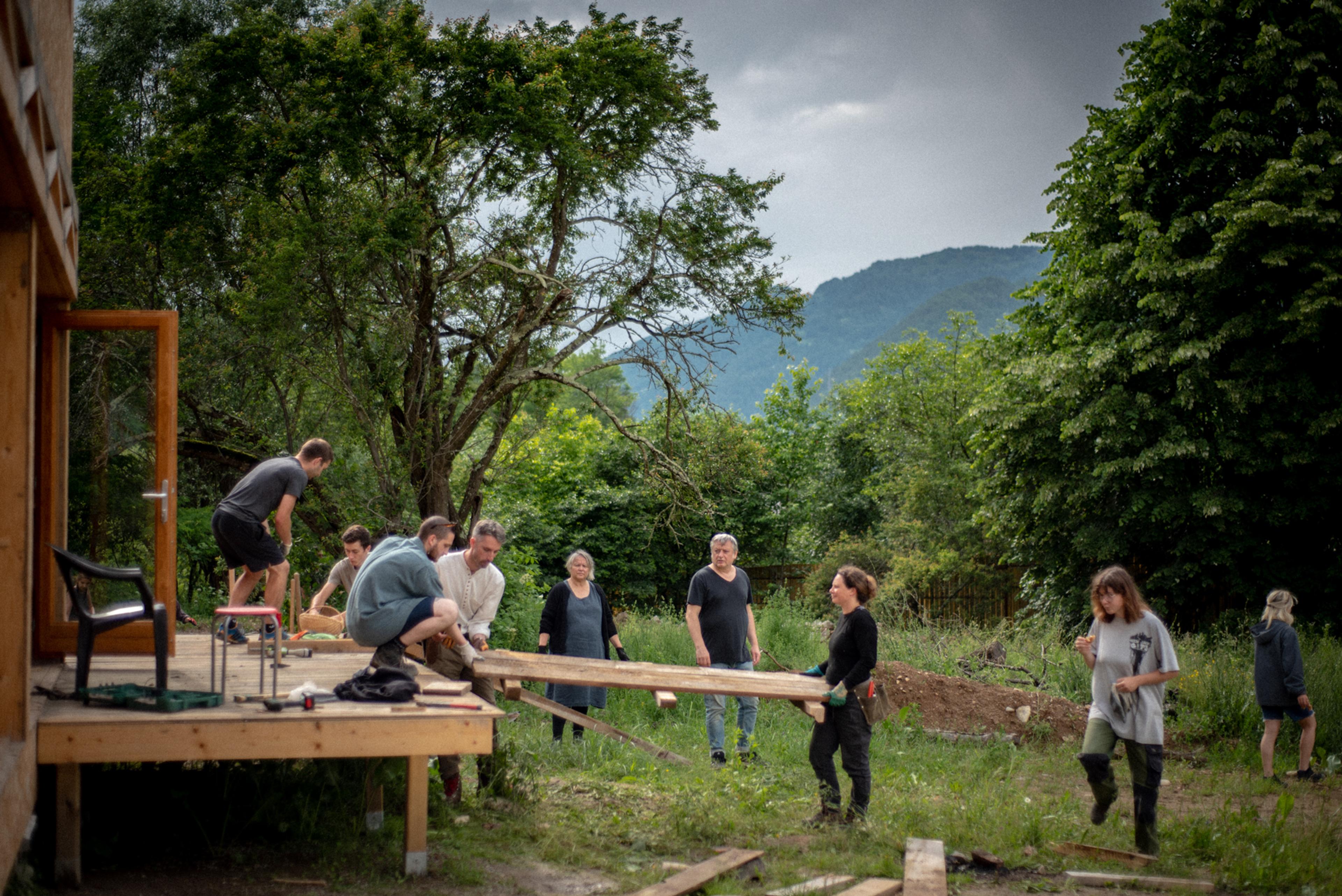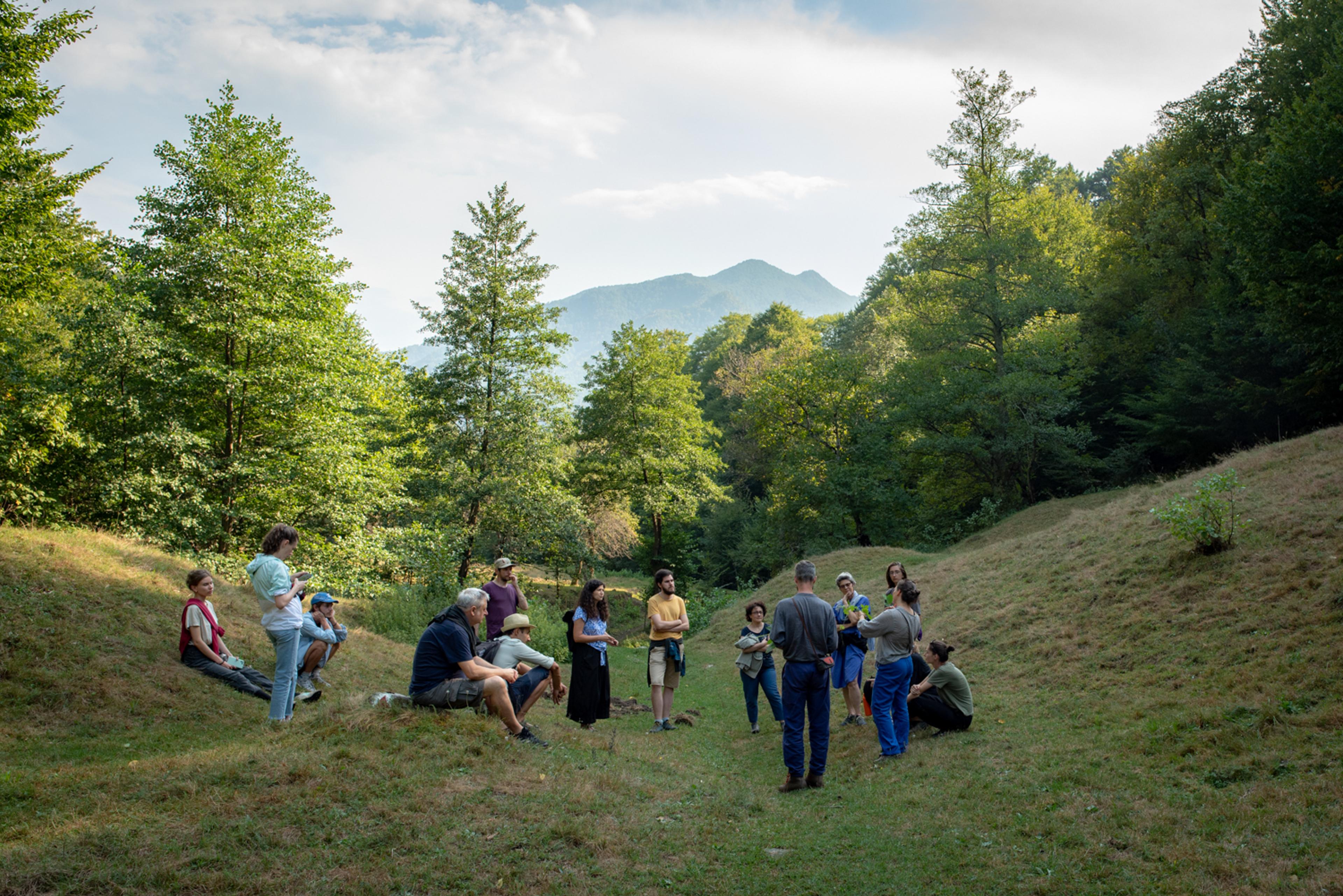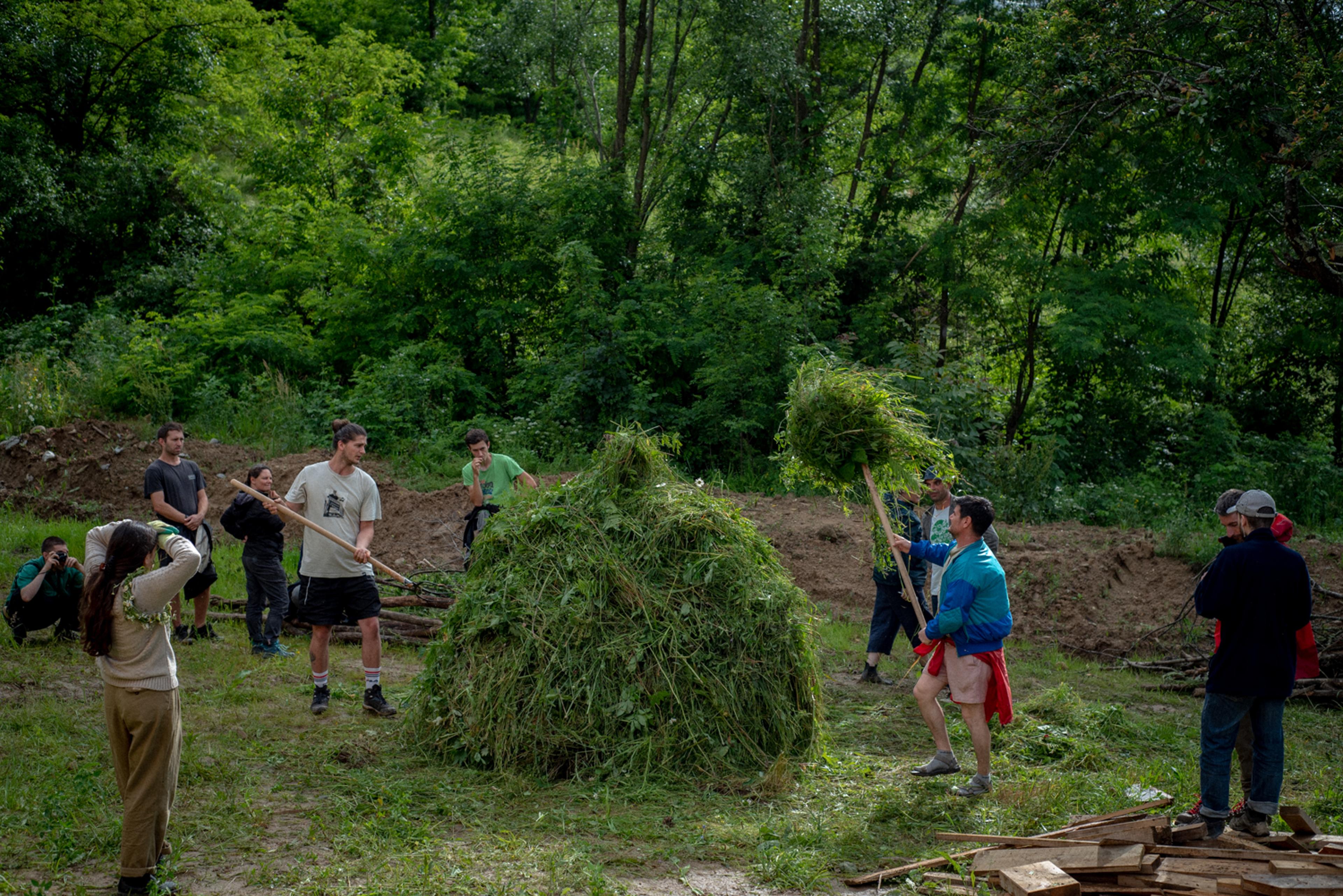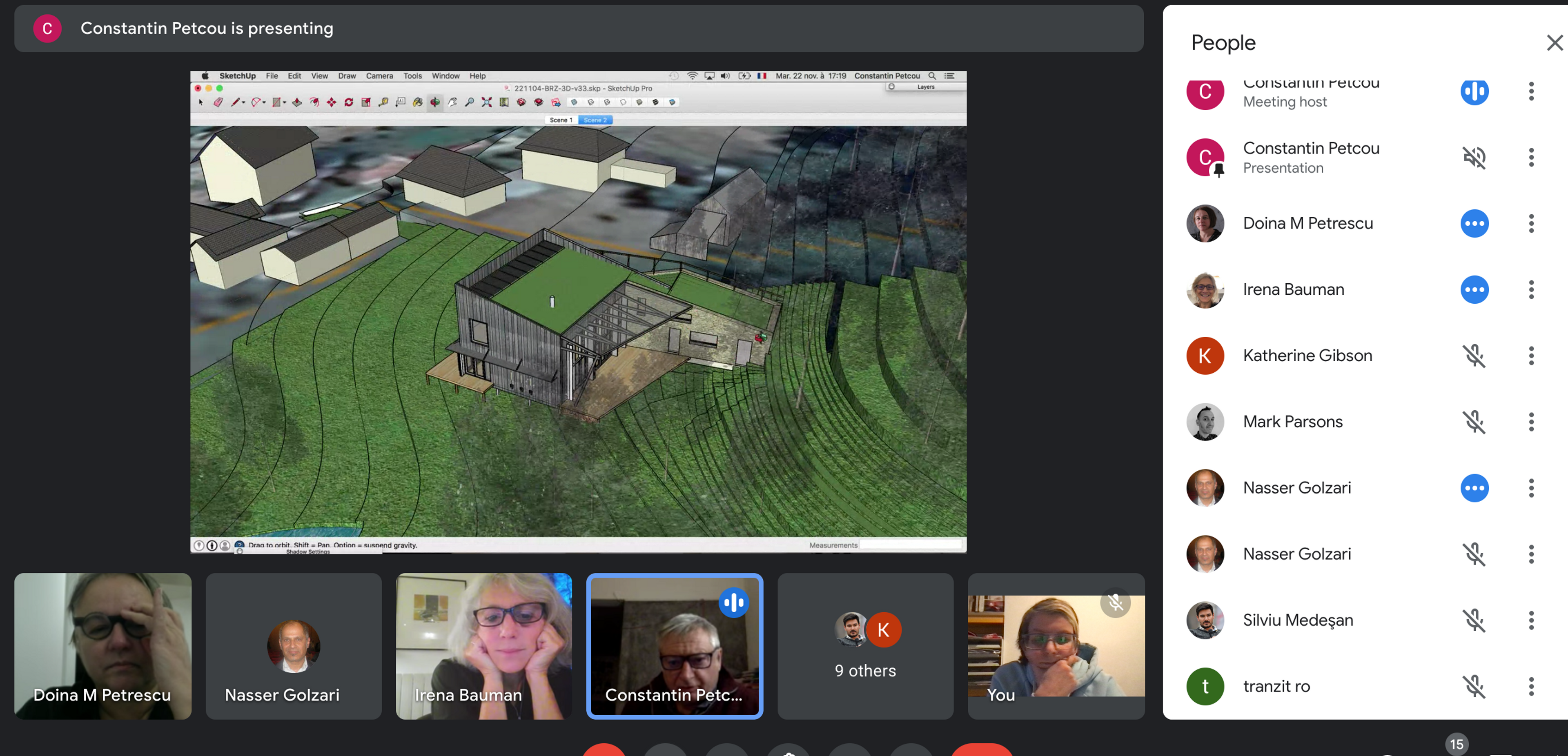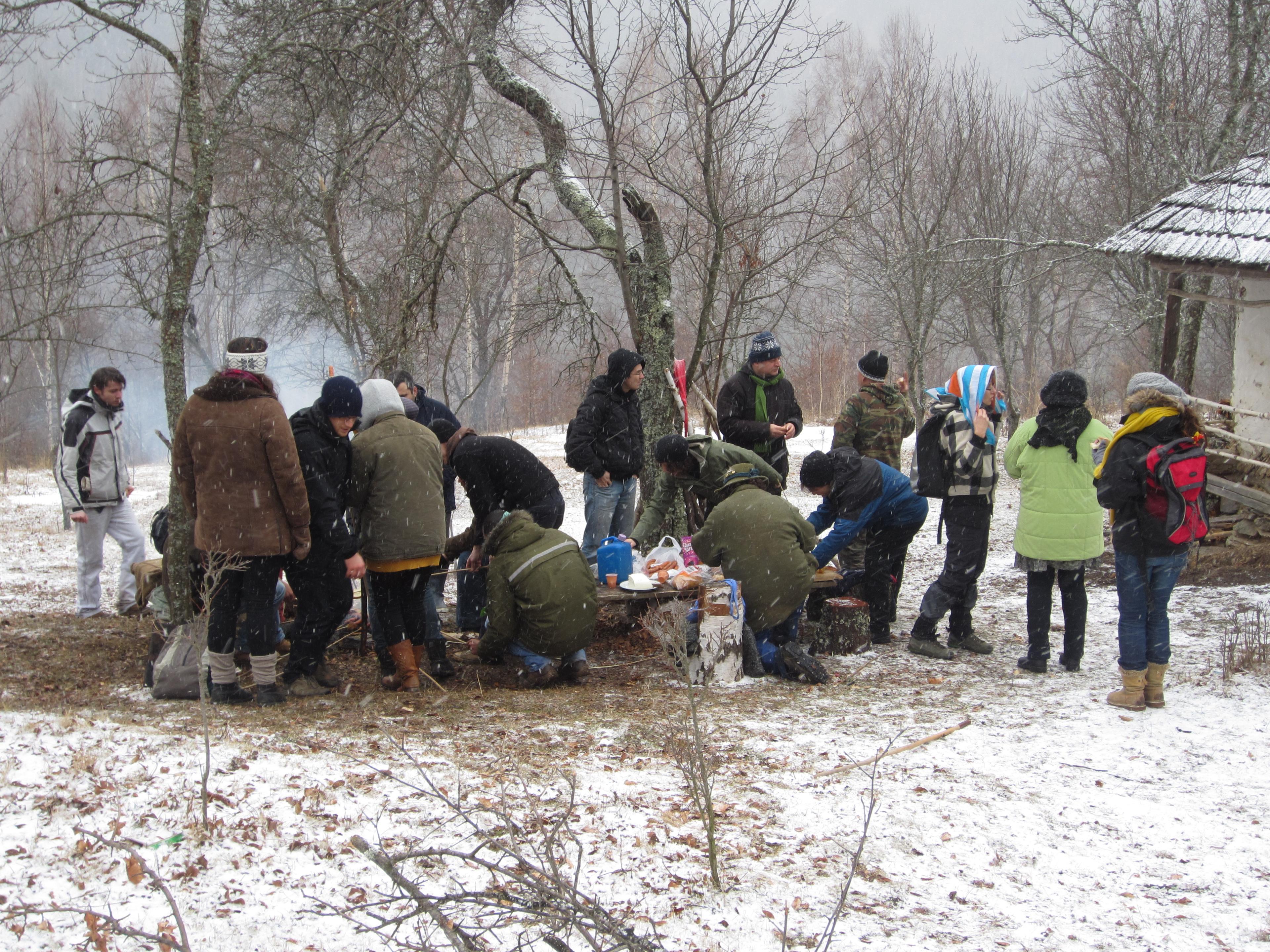BrezoiRO
Brezoi sits within the Southern Carpathian mountains, between the regions of Transylvania and Northern Oltenia. The mountains around the village are steep and forested, and managed as common land. Under communism, the existing timber industry was massively extended, with a large factory built in the village, along with residential blocks, next to the older and much smaller family homes, each with their compact gardens, sheds and vines. Meadows and fields extend into the village.
Local struggles are familiar to many other European rural areas: not-so-obvious economic prospects, young people leaving for the cities or abroad, and a stark disconnection between the rich natural resources and opportunities to create sustainable livelihoods. In 2018 a new Open Air Blues Festival started to put Brezoi on a national and international map, creating a new visitor economy.
In 2022 the TERRRA Network - initiated by Atelier d’Architecture Autogérée (AAA) as an expanded network of the previous initiatives such as the Eco Nomadic School – organized the collective purchase of a small house with adjusting meadows and woodland.
| Region | Vâlcea County |
|---|---|
| Local partners |
|
| Population | 6,022 |
| Common fruit, vegetables, animals | Lightfly, wild rasberries, wild blueberries, dew mushroom |
| Tradition | Blues festival, Frog and snail eating |
| Scent | Fresh mountain and forest air |
| Distances from Brezoi | Distances |
Nature’s Rhythms, Blackberries, and Art as a Practice of Connection to Place
A year earlier, during the 1st edition of The School of Planetary Gardeners TERRRA (June 2023), RSoE hosted a trans-local drawing workshop. This method helps to uncover knowledge within the group that might not otherwise emerge. During a sharing circle, I (Indra Gleizde ) introduced Latvian traditions for celebrating the summer solstice, as the seminar coincided with this time in June. Doina Petrescu suggested we honor the shortest night of the year by gathering by a bonfire. We sang folk songs that celebrate this season and its connection to nature.
For this year's seminar, I decided to research and lead a small action—whether an event, activity, or "ritual" in the broadest sense—that would engage the group in acknowledging and connecting with the setting we found ourselves in: Brezoi in August. The aim was to foster awareness of how nature, place, and culture co-create one another.
Before heading to Brezoi, I reached out to Măriuca Onică, an active local, to learn what mid-August means to the villagers.
Mid-August is a rich time in Brezoi for gathering and preserving the season's bounty. People make jams, syrups, and sweets from blackberries and blueberries harvested in the mountains by the nearby Roma community.
After August 15th, when Romanians celebrate Saint Mary’s Day, shepherds descend from the mountains with their animals, marking the end of summer grazing. This holiday signals the start of cooler, less favorable weather for mountain pastures and marks the end of the brânză de burduf (mountain-made cheese) season, which requires the specific conditions of the coniferous forests.
If there’s rain for a few days, it’s the perfect time for mushroom foraging, especially for the prized hribi mushrooms (boletus mushrooms, known as baravika in Latvian, a beloved variety there as well). Locals often gather these flavorful mushrooms for personal use and sale.
In Brezoi, most people still tend their own gardens, and mid-August brings the harvest of tomatoes and peppers, which are then used to make zacusca—a winter preserve made from onion, tomato paste, carrots, roasted peppers, eggplant, and mushrooms when available. This is also the season for making pickles, roasting peppers and eggplants, preserving them for winter.
For animal feed, locals gather small haystacks into larger ones, known as clăi. After cutting in June and July, the hay is now dry and easier to work with in the drier August weather.
During the seminar, blackberries kept weaving their way into conversations. Part of the TERRRA grounds is covered in mountainous forest that slowly creeps down into the cleared areas—and with it, the blackberry brambles. While the berries are tasty and healthy, their rapid spread and sharp thorns make working the land difficult, leaving hands and legs scratched and clothes snagged. Participants dealing with blackberries in their own gardens asked for advice from the gardeners present, but the solution is a slow one: cutting back and removing the brambles by hand, repeatedly. Goats, if available, can help keep the stubborn plants under control.
These observations and Mariuca’s story inspired a banner I eventually created. I began by searching for pigments in the garden and forest that could be used, gathering flowers, plants, and berries along the way. As blackberries kept appearing in conversation—and because of the rich, vibrant color they left on paper—they felt like the perfect choice.
The banner reads: La mijlocul lui august trebuie să mă gândesc la iarnă, which from Romanian translates to In mid-August, I must think of winter. We unveiled it during the evening grill and gathering. Over time, could year-round observations, stories, and actions be collected together into an TERRRA's almanac?
School of Planetary Gardeners – TERRRA - 2024 seminar
In mid-August, the second edition of the annual TERRRA network seminar took place from August 13-18.
The summer heat underscored the focus on climate change and social adaptation. The days filled with public presentations, talks, and workshops brought together local and international experts. A key strength is the diverse participants—architects, gardeners, artists, and activists—offering varied professional perspectives. Additionally, this year a group of residents, who stayed on-site beforehand, developed and presented more in-depth projects.
With construction now complete, The School of Planetary Gardeners is taking shape. Located in Brezoi, in the Carpathian Mountains, the 6,000m² site serves as a shared space for educational and agroecological experimentation, including accommodation and seminar areas.
As a member of the TERRRA network, RSoE was represented by me, Indra Gleizde . I gave a talk on RSoE's working methods for developing long-term projects that involve local rural communities and conducted a small creative project during my brief stay.
The program and venue are managed communally, with core hosts and organizers Doina Petrescu and Constantin Petcou from Atelier d’Architecture Autogérée (AAA). This year saw greater involvement from local Romanian partners, adding a more situated atmosphere. The program began on August 14 with presentations and a trip to the Ethnomuseum Astra, followed by three packed days of talks, workshops, and communal activities. The final days focused on sharing future ideas and plans. With the venue now fully operational, attention shifts from construction to curating future events and increasing activity at the site.
The core program is outlined here, however, many guests gave spontaneous presentations that are not included:A few weeks before the seminar began, the site welcomed five residents. They worked on individual projects aligned with TERRRA’s vision, as well as a few collaborative on-site initiatives. Each resident shared their results through presentation and led walks & talks when relevant.
Landscaper and gardener Anthony Macharinow studied the site's diverse insect population, documenting them through photography and creating an image catalog. He gave a very visual presentation, educating the audience on the ecological needs and contributions of these insects.Landscapers and gardeners Nina Hourdin and Vladimir Slonska focused on developing a forest garden as the forest slowly overtakes the site's old orchard. Their work aimed to create a space for both humans and non-humans in this steep environment. In their presentation, they explained their approach of working with what’s already on-site—studying trees and shrubs to manage, remove, or transplant them in favor of edible plants, while accounting for the limited year-round activity. They led the group through the area talking about different plant species present and about approaches of how to work with them, particularly their efforts to manage the spread of blackberries overtaking the orchard.Each seminar day offered presentations, talks, and workshops. For example, Gilles Clément “Commitments for the Future” on the urgent lifestyle changes for climate resilience, Véronique Mure’s “Gardening the Roots; Paying Attention to the Invisible,” and Meike Schälk’s environmental storytelling in “Re-storying a River in the North of Sweden." And many more that can be found in the attached program PDF above.
Additionally, spontaneous guest presentations brought valuable local perspectives. These included insights from Brezoi's priest, M. Preoteasa, on the town's history and evolution; Brîndușa Tudor’s multi-faceted approach to the Metakitchen project; ecological activism efforts by Cristina and Paul Budan from the collective Pe Topolog in Sus; and Tudor Elian’s presentation on archival work at the Peasant Museum, revealing unexpected ethnological findings.
On behalf of RSoE, I (Indra Gleizde ) gave a talk titled “Rural as a Place for Creative Freedom in Challenging Times.” The talk focused on RSoE's methods for developing long-term projects that engage with local rural communities, with a particular emphasis on the Zburazh project in rural Belarus. In the evening, we screened one of the Zburazh films, which depicts creative engagement with Winter Solstice traditions in contemporary times.
In the closing discussions, it was mentioned that with much of the building phase complete, the focus of future TERRRA activities can shift towards curatorial direction and the practice of self-governance.
A big thank you to Doina, Constantin, Gilles and everyone involved in organizing and managing the event! Excited to see what’s next for Brezoi!
| Region | Vâlcea County |
|---|---|
| Local partners |
|
| Population | 6,022 |
| Common fruit, vegetables, animals | Lightfly, wild rasberries, wild blueberries, dew mushroom |
| Tradition | Blues festival, Frog and snail eating |
| Scent | Fresh mountain and forest air |
| Distances from Brezoi | Distances |
